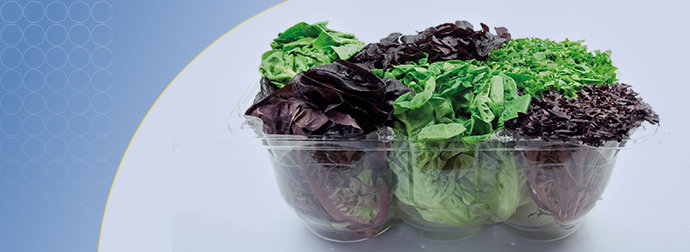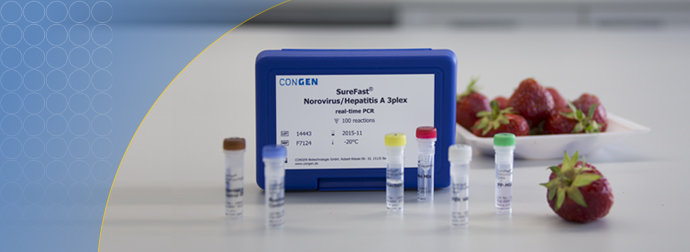
Viruses
Detect contamination with viruses in food
- Home
- /
- Analytes
- /
- Microbiology
- /
- Viruses
Viruses in Food Safety
Importance of monitoring viruses
Viruses, particularly norovirus and hepatitis A, are significant causes of foodborne diseases. Viral contamination of food typically occurs through contact with infected individuals, such as food handlers. Foods that are manually handled and not processed before consumption are especially at risk.
Food contaminated with viruses can cause infections ranging from mild diarrheal illness to severe hepatitis. Identifying viruses is a crucial aspect of food safety management and can be performed using molecular biological systems, such as the highly specific real-time PCR kits from the SureFast® Microbiology product line.
Common foodborne viruses
Hepatitis A virus can cause serious infections, primarily affecting the liver. Symptoms include gastrointestinal complaints, fever, and skin rash. The virus is mostly transmitted through contaminated drinking water (including ice cubes), contaminated food (mainly mussels, oysters, fruit, and vegetables), or via smear infection.
Noroviruses are responsible for more than 90% of non-bacterial gastroenteritis cases due to their extreme environmental stability. They can cause outbreaks in community facilities such as hospitals, nursing homes, and healthcare facilities. Symptoms include vomiting, diarrhea, and nausea. While norovirus infections can occur year-round, there is an increase during winter months, often referred to as “winter vomiting disease.” The virus can be transmitted directly from person to person or indirectly through contaminated surfaces, objects, food (e.g., mussels, fruits, and vegetables), or water. The minimum infectious dose is between 10 to 100 viral particles.
Key benefits of using SureFast® PATHOGEN kits
- Highly specific detection: Ensures accurate identification of viral contaminants.
- Rapid results: Provides quick and reliable data to manage food safety.
- Versatile application: Suitable for various food matrices and environmental samples.
- Easy integration: Fits seamlessly into existing food safety management systems.
Conclusion
Monitoring and controlling viral contamination in food is essential for protecting public health. Utilizing advanced molecular biological systems like the SureFast® PATHOGEN real-time PCR kits helps ensure the detection and management of viruses such as norovirus and hepatitis A, maintaining high standards of food safety.
Product portfolio
| Product | Description | No. of tests/amount | Art. No. |
|---|---|---|---|
| SureFast® Hepatitis E PLUS |
SureFast® Hepatitis E PLUS is a real-time RT-PCR for the direct and qualitative detection of hepatitis E virus. The test contains an Internal Control RNA (ICR, consisting of MS2-bacteriophage) as an internal control of sample preparation procedure … Read more |
100 reactions | F7142 |
| SureFast® Hepatitis A PLUS |
The test is a real-time RT-PCR for the direct and qualitative detection of hepatitis A virus. The test contains an Internal Control RNA (ICR) as an internal control of sample preparation procedure and to determine possible PCR-inhibition. For … Read more |
100 reactions | F7125 |
| SureFast® Norovirus/Hepatitis A 3plex |
The SureFast® Norovirus/Hepatitis A 3plex is a multiplex real-time RT-PCR for the direct qualitative detection and differentiation of norovirus (genogroup I and II) and hepatitis A. The test contains an Internal Control RNA (ICR, consisting of … Read more |
100 reactions | F7124 |



